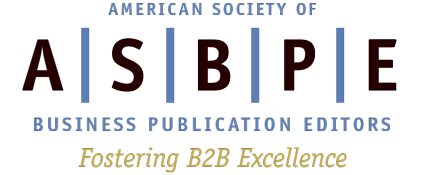ASME editors applaud society’s native ad guidelines but business side is less enthusiastic, Holt says
New York — The American Society of Magazine Editors always has taken the lead role in helping publications develop the relationship be between editorial and advertising. So it was no surprise that ASME again set the pace last year in posting an advisory specifically addressing native advertising.
The sticky question of labeling the advisory addresses already is exposing an editorial-ad split. “Editors were happy we provided the guidelines,” ASME chief executive Sid Holt told Ethics News Updates. “But on the business side, guidelines are treated warily.” In some cases, Holt said, “a cramping our style” attitude exists.
Native advertising’s appeal, he added, “is that it can be mistaken for editorial content.” Some marketers will not be happy with publishers who reject the format. The cause for possible unrest is clearly indicated by the tone of the Marketer-Provided Content and Native Advertising section recently added to ASME’s Editorial Guidelines document:
a. Marketer-provided content, including native advertising, should be prominently labeled as advertising, and the source of such content and the affiliation of the authors should be clearly acknowledged. The term ‘Sponsor Content,’ already in use on some websites, can be used to label native advertising.
b. Native advertising should include a prominent statement or ‘What’s This?’ rollover at the top of the advertising unit explaining that the content has been created by a marketer and that the marketer has paid for its publication.
c. Native advertising should not use type fonts and graphics resembling those used for editorial content and should be visually separated from editorial content.
Self-regulation preferred
The suspicion that native ads could be mistaken for editorial content prompted the Federal Trade Commission to sponsor a December workshop seeking clarification. ASME’s Holt was a panelist.
“We don’t know what FTC will do next, and we would prefer to regulate ourselves,” he said. But meanwhile, if a parade of native ads using look-alike fonts appears, “that would further attract FTC attention. The visual distinction is vital to maintain.”
Holt believes publishers still have a chance to provide ethical principles that define native ad practice. “There is a big debate going on about what to do next,” he said. The expectation that the format “would turn into the next big thing hasn’t happened yet. So now is the time to lay down the rules.”
ENU also asked Holt whether the rush by corporate marketers to achieve “publisher” status would leave media out in the cold in terms of revenue potential. “That concern is overblown,” he said. “Creating content is harder than it looks. Publishers also are very good at creating communities and building reader loyalty.”
ASME’s advertorial guidelines first appeared in 1982. Since then, ASME has made few changes, Holt said. A committee of seven reviews existing standards monthly. A separate committee of seven monitors the group’s ethics code, which currently is being updated. “I feel pretty good about the guidelines we’ve drafted,” Holt said. “Basically that’s the same approach the New York Times is taking now.”
(Editor’s note: NYT’s approach is described in a blog written by ASBPE president Mark Schlack. “The New York Times now takes native advertising, he says, but they do a much better job of leveling with their readers, and they are successfully selling this more ethical version of native advertising.”
Schlack’s column includes an example of a current NYT native advertising message sponsored by Intel. “The entire article is in a sans serif font, in contrast to the standard Times Roman variant.” he notes. “A shaded background further sets it off. And to leave no doubt, the top and bottom of the page indicate that the post was paid for the advertiser.”)
